The History Book Club discussion

This topic is about
Encounters at the Heart of the World
NATIVE AMERICANS
>
ARCHIVE - NOVEMBER - ENCOUNTERS AT THE HEART OF THE WORLD: A HISTORY OF THE MANDAN PEOPLE - (November 9th - start date)
date newest »
newest »
 newest »
newest »
 About the Author
About the AuthorElizabeth A. Fenn is an American historian whose book Encounters at the Heart of the World: A History of the Mandan People won the 2015 Pulitzer Prize for History. She serves as the Walter S. and Lucienne Driskill chair in Western American History at University of Colorado-Boulder. Fenn received a bachelor of arts degree in history (with honors) from Duke University in 1981, then attended Yale University, finishing her masters in 1985. Fenn left her doctoral program at Yale to enter the auto mechanic program at Durham Technical Community College and worked as a mechanic around the Durham, North Carolina area. She wrote her dissertation, Pox Americana, while working part time, and graduated in 1999. Pox Americana covered the 1775–82 North American smallpox epidemic. Fenn was interviewed on multiple national news outlets about biological warfare after the September 11 attacks.
Prior to joining the University of Colorado at Boulder in 2012, Fenn taught at George Washington University from 1999 to 2002 and Duke from 2002 to 2012.
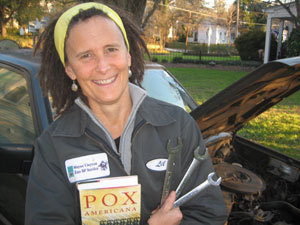
 Remember the following:
Remember the following:Everyone is welcome but make sure to use the goodreads spoiler function.
If you come to the discussion after folks have finished reading it, please feel free to post your comments as we will always come back to the thread to discuss the book.
The rules
You must follow the rules of the History Book Club and also:
First rule of Buddy Read:
Respect other people's opinions, no matter how controversial you think they may be.
Second rule of Buddy Read:
Always, always Chapter/page mark and spoiler alert your posts if you are discussing parts of the book.
To do these spoilers, follows these easy steps:
Step 1. enclose the word spoiler in forward and back arrows; < >
Step 2. write your spoiler comments in
Step 3. enclose the word /spoiler in arrows as above, BUT NOTE the forward slash in front of the word. You must put that forward slash in.
Your spoiler should appear like this:
(view spoiler)
And please mark your spoiler clearly like this:
State a Chapter and page if you can.
EG: Chapter 24, page 154
Or say Up to Chapter *___ (*insert chapter number) if your comment is more broad and not from a single chapter.
Chapter 1, p. 23
(view spoiler)
If you are raising a question/issue for the group about the book, you don't need to put that in a spoiler, but if you are citing something specific, it might be good to use a spoiler.
By using spoilers, you don't ruin the experience of someone who is reading slower or started later.
Thanks.
 Table of Contents
Table of ContentsPreface xiii
Part I: Discovering the Heart of the World
Chapter 1. Migrations: The Making of the Mandan People 3
Chapter 2. Contacts: Villagers and Newcomers 33
Chapter 3. Earthwork: The Substance of Daily Life 51
Chapter 4. Connections: Sustained European Contact Begins 79
Part II: Inventions and Reinventions
Chapter 5. Customs: The Spirits of Daily Life 99
Chapter 6. Upheavals: Eighteenth-Century Transformations 132
Chapter 7. Scourge: The Smallpox of 1781 154
Part III: The Heart of Many Worlds
Chapter 8. Convergences: Forces beyond the Horizon 177
Chapter 9. Hosts: The Mandans Receive Lewis and Clark 205
Chapter 10. Corn: The Fuel of Plains Commerce 229
Part IV: New Adversities
Chapter 11. Sheheke: The Metamorphosis of a Chief 247
Chapter 12. Reorientation: The United States and the Upper Missouri 267
Chapter 13. Visitation: Rats, Steamboats, and the Sioux 290
Chapter 14. Decimation: "The Smallpox Has Broke Out 311
Epilogue 327
 Suggested Syllabus
Suggested SyllabusWeek One - November 9th - November 15th
Preface and Part I: Discovering the Heart of the World: Chapters 1-4 pp. xiii-98
Week Two - November 16th - November 22nd
Part II: Inventions and Reinventions: Chapters 5-7 pp. 99-176
Week Three - November 23rd - November 29th
Part III: The Heart of Many Worlds: Chapters 8-10 pp. 177-246
Week Four - November 30th - December 6th
Part IV: New Adversities: Chapters 11-14 and Epilogue pp.247-336
 Those of you who are going to read Encounters at the Heart of the World: A History of the Mandan People. Use the spoiler html because this is a single thread discussion.
Those of you who are going to read Encounters at the Heart of the World: A History of the Mandan People. Use the spoiler html because this is a single thread discussion. 1. Read message three and that message shows you the rules for the buddy read discussion and how to do the spoiler html.
2. Message 4 actually shows you the spoiler html code. Use it on this thread.
3. Where is the Table of Contents and the reading syllabus? - Message 5 and 6.
 All, we do not have to do citations regarding the book or the author being discussed during the book discussion on these discussion threads - nor do we have to cite any personage in the book being discussed while on the discussion threads related to this book.
All, we do not have to do citations regarding the book or the author being discussed during the book discussion on these discussion threads - nor do we have to cite any personage in the book being discussed while on the discussion threads related to this book.However if we discuss folks outside the scope of the book or another book is cited which is not the book and author discussed then we do have to do that citation according to our citation rules. That makes it easier to not disrupt the discussion.
 Hello everyone. We are kicking off our discussion of Encounters at the Heart of the World today. For this week, we are reading/discussions the Preface and Chapter 1-4. I've posted some discussion questions above, or you can chime in with your thoughts so far. Looking forward to talking with you all.
Hello everyone. We are kicking off our discussion of Encounters at the Heart of the World today. For this week, we are reading/discussions the Preface and Chapter 1-4. I've posted some discussion questions above, or you can chime in with your thoughts so far. Looking forward to talking with you all.
 Betty wrote: "Teri has just been awesome with these botm discussions, thanks to you Teri :)"
Betty wrote: "Teri has just been awesome with these botm discussions, thanks to you Teri :)"You're welcome, and Thank You! I've enjoyed the discussions and getting to know others in the group. Glad you'll be joining us for this one.
 Hi everyone. I hope some of you are digging into the details of the Mandan people. Bentley has set up a glossary thread as well. Peruse it as you have time:
Hi everyone. I hope some of you are digging into the details of the Mandan people. Bentley has set up a glossary thread as well. Peruse it as you have time:https://www.goodreads.com/topic/show/...
 Hi everyone! Just a reminder that we're are still in Week 1 of Encounters At the Heart of the World. We'll move on to Week 2 on Monday.
Hi everyone! Just a reminder that we're are still in Week 1 of Encounters At the Heart of the World. We'll move on to Week 2 on Monday.Question: Were there any traits about the Mandan people that surprised you as you started learning about them?
Just a reminder to use your spoiler tags when commenting. See msgs 3 and 4 above for help.
 We are moving into week 2 of our discussion of the Mandan people.
We are moving into week 2 of our discussion of the Mandan people. Question for Part II of Encounters at the Heart of the World
(view spoiler)
 I am really learning alot about the Mandan people. Their farming practices, earthworks, the migration patterns, etc. Highly entertaining. I never learned much about Indian life in the past so am learning alot in this book.
I am really learning alot about the Mandan people. Their farming practices, earthworks, the migration patterns, etc. Highly entertaining. I never learned much about Indian life in the past so am learning alot in this book.
 Helga wrote: "I am really learning alot about the Mandan people. Their farming practices, earthworks, the migration patterns, etc. Highly entertaining. I never learned much about Indian life in the past so am le..."
Helga wrote: "I am really learning alot about the Mandan people. Their farming practices, earthworks, the migration patterns, etc. Highly entertaining. I never learned much about Indian life in the past so am le..."Glad you are joining us Helga! I studied a lot about the Oglala Lakota people. Mainly centered around the Pine Ridge Reservation/Wounded Knee II and Indian Industrial school. But I had never heard of the Mandan. I have to say, Part II has been most interesting to me.
 I am just getting started. I want to read it slowly so I may not exactly keep up. My hubby is reading it also and we are sharing one book. I am interested in native peoples but the Mandan are new to me, too.
I am just getting started. I want to read it slowly so I may not exactly keep up. My hubby is reading it also and we are sharing one book. I am interested in native peoples but the Mandan are new to me, too.
 Donna wrote: "I am just getting started. I want to read it slowly so I may not exactly keep up. My hubby is reading it also and we are sharing one book. I am interested in native peoples but the Mandan are new t..."
Donna wrote: "I am just getting started. I want to read it slowly so I may not exactly keep up. My hubby is reading it also and we are sharing one book. I am interested in native peoples but the Mandan are new t..."No need to rush it. We keep these threads open indefinitely. It's great that your husband is reading with you.
Very interesting! Most happy to be reading this book. The Mandan people were evolved. It is always interesting to read about lost civilizations which were not the savages we all believed they were.
Teri wrote: "Glad you are joining us, Gwennyth!"
Thank you,Teri! Thank you also for a great job moderating!
Thank you,Teri! Thank you also for a great job moderating!
 Hi everyone! We're about to finish up week 2 of our adventure with the Mandans. Here's a couple of questions for you to ponder/respond on Chapter 7:
Hi everyone! We're about to finish up week 2 of our adventure with the Mandans. Here's a couple of questions for you to ponder/respond on Chapter 7:(view spoiler)
 Posting last week's summaries late due to the holidays. I'll have this weeks posted soon. We are in our final week of discussion.
Posting last week's summaries late due to the holidays. I'll have this weeks posted soon. We are in our final week of discussion.
 If you've enjoyed this book and want to learn more about the Mandan, you may want to read:
If you've enjoyed this book and want to learn more about the Mandan, you may want to read: by Cedric Red Feather (no photo)
by Cedric Red Feather (no photo)
 Francie wrote: "I really enjoyed reading about the Mandan Indians and their way of life."
Francie wrote: "I really enjoyed reading about the Mandan Indians and their way of life."(view spoiler)
 Apologies for joining so late - I'd lost my Goodreads info and just now got back on. Imagine my surprise to see Encounters at the Heart of the World as an ongoing discussion - barely - it ends in a few days.
Apologies for joining so late - I'd lost my Goodreads info and just now got back on. Imagine my surprise to see Encounters at the Heart of the World as an ongoing discussion - barely - it ends in a few days. But I read this book last spring and enjoyed it so much I really tried to visit the area on my annual trip to North Dakota - I had it all mapped out and ready but time did not permit (I live near the northeast corner in the summer times.)
(view spoiler)
 Welcome, Becky! It's never too late to join in discussions here at the HBC. We continue to moderator/watch threads and many members join in when they get the chance to read a book.
Welcome, Becky! It's never too late to join in discussions here at the HBC. We continue to moderator/watch threads and many members join in when they get the chance to read a book.How great it must have been for you to visit the area. I enjoy going on historical trips when I can.
(view spoiler)
Books mentioned in this topic
The Essential Lewis and Clark (other topics)Mandan Dreams (other topics)
Encounters at the Heart of the World: A History of the Mandan People (other topics)
Authors mentioned in this topic
Cedric Red Feather (other topics)Elizabeth A. Fenn (other topics)


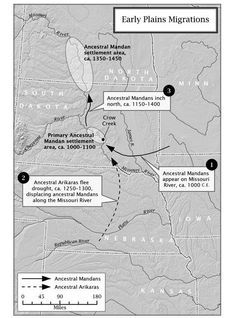



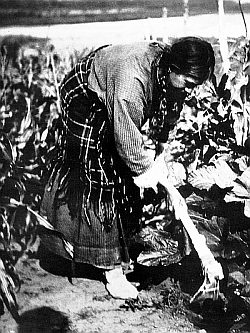




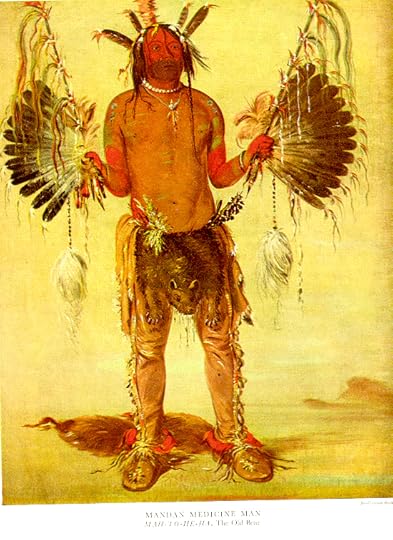


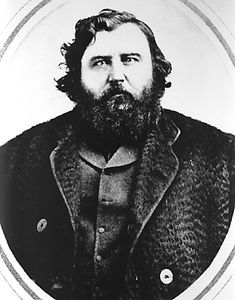

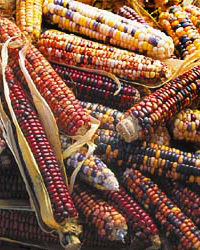
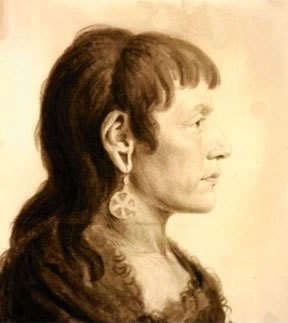

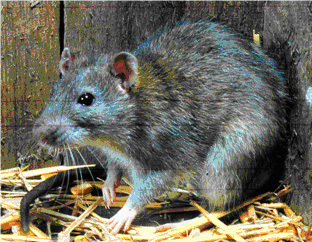






BOOK OF THE MONTH - NOVEMBER - ENCOUNTERS AT THE HEART OF THE WORLD: A HISTORY OF THE MANDAN PEOPLE by Elizabeth A. Fenn
Synopsis:
Winner of the 2015 Pulitzer Prize for History
Encounters at the Heart of the World concerns the Mandan Indians, iconic Plains people whose teeming, busy towns on the upper Missouri River were for centuries at the center of the North American universe. We know of them mostly because Lewis and Clark spent the winter of 1804-1805 with them, but why don't we know more? Who were they really? In this extraordinary book, Elizabeth A. Fenn retrieves their history by piecing together important new discoveries in archaeology, anthropology, geology, climatology, epidemiology, and nutritional science. Her boldly original interpretation of these diverse research findings offers us a new perspective on early American history, a new interpretation of the American past.
By 1500, more than twelve thousand Mandans were established on the northern Plains, and their commercial prowess, agricultural skills, and reputation for hospitality became famous. Recent archaeological discoveries show how these Native American people thrived, and then how they collapsed. The damage wrought by imported diseases like smallpox and the havoc caused by the arrival of horses and steamboats were tragic for the Mandans, yet, as Fenn makes clear, their sense of themselves as a people with distinctive traditions endured.
A riveting account of Mandan history, landscapes, and people, Fenn's narrative is enriched and enlivened not only by science and research but by her own encounters at the heart of the world.
From Booklist
*Starred Review* Anyone who has seen the sensitive portraits of Mandan chiefs painted in the 1830s by George Catlin and Karl Bodmer will be captivated by Fenn’s exhaustively researched history of the tribe that once thrived on the upper Missouri River in present-day North Dakota—at one time the center of northern Plains commerce. Peaking at a population of 12,000 by 1500, and still a vital presence when Lewis and Clark visited in 1804, the Mandans were besieged by a daunting succession of challenges, including Norway rats that decimated their corn stores, two waves of smallpox, whooping cough, and cholera, reducing their numbers to 300 by 1838. Piecing together the journals of white visitors to this then unmapped land—from the French explorers Lahontan in 1688 and de la Vérendrye 50 years later, to Lewis and Clark, and later Prince Maximilian accompanied by Bodmer, the Swiss painter—and the annual reports to the commissioner of Indian Affairs, Fenn weaves the historical fabric of this proud people, enhanced by archaeological and climate studies tracing their migrations, food sources, and intertribal conflicts. Simultaneously scholarly and highly readable, Fenn’s contribution enriches our understanding of not just Mandan history but also the history and culture of the pre-reservation northern Plains as well. --Deborah Donovan --This text refers to the Hardcover edition.
Reviews
“Encounters at the Heart of the World shows readers that there is much more to Mandan history than merely their suffering at the hands of Euroamerican epidemiology . . . Fenn relies upon deep archival research and a felicitous prose style to bring this forgotten world to life, starting with the Mandans' ancestral migrations from places south and east before their coalescence around the year 1400 in a fifty-mile stretch along the Missouri between the mouths of the Knife and Cannonball rivers. And what a rich and vibrant culture it was. Some of Fenn's best work concerns the material and social life of the Mandans . . . Perhaps the most compelling portion of the book is Fenn's recreation of Mandan cosmology and religious life, particularly the Okipa ceremony, an elaborate and intricate ritual performed every summer . . . The Mandan story is a reminder that even the most flourishing societies can be brought low, in virtually an instant, by the unpredictable workings of the natural world (to say nothing of human foes). But Fenn's account tells us also that cultures can persist and even recover in the wake of such awful devastation.” ―Andrew Graybill, The Daily Beast
“Elizabeth Fenn's Encounters at the Heart of the World is a book about those scraps--and about the author's personal encounters with them. It is a book of fragments or, as Ms. Fenn describes it, ‘a mosaic . . . pieced together out of stones from many quarries.' . . . Somehow the fragments cohere into a more compelling portrait than a more linear brush, and a less personally visible artist, could have painted . . . Ms. Fenn is most compelling when she applies her detective skills to things scientific, medical and ecological . . . Ms. Fenn's mosaic brilliantly overcomes the shortcomings of her written and archaeological sources . . . Readers who follow her toward, but never quite into, the heart of the Mandans' world will be richer for the journey.” ―Daniel K. Richter, The Wall Street Journal
“Relying on fragmentary documentary records, discoveries by archaeologists, imaginative detective work, evidence uncovered by anthropologists, geologists, climatologists and nutritional scientists, plus paintings and drawings by frontier artists George Catlin, Karl Bodmer and others, Fenn pieces together a rich and remarkably detailed history of this nearly forgotten tribe . . . The product of her work is this wonderfully interesting book that should finally help the Mandans claim their rightful place in history.” ―Steve Raymond, The Seattle Times
“Anyone who has seen the sensitive portraits of Mandan chiefs painted in the 1830s by George Catlin and Karl Bodmer will be captivated by Fenn's exhaustively researched history of the tribe that once thrived on the upper Missouri River in present-day North Dakota--at one time the center of northern Plains commerce. Peaking at a population of 12,000 by 1500, and still a vital presence when Lewis and Clark visited in 1804, the Mandans were besieged by a ‘daunting succession of challenges,' including Norway rats that decimated their corn stores, two waves of smallpox, whooping cough, and cholera, reducing their numbers to 300 by 1838. Piecing together the journals of white visitors to this then unmapped land--from the French explorers Lahontan in 1688 and de la Vérendrye 50 years later, to Lewis and Clark, and later Prince Maximilian accompanied by Bodmer, the Swiss painter--and the annual reports to the Commissioner of Indian Affairs, Fenn weaves the historical fabric of this proud people, enhanced by archaeological and climate studies tracing their migrations, food sources, and intertribal conflicts. Simultaneously scholarly and highly readable, Fenn's contribution enriches our understanding of not just Mandan history, but the history and culture of the prereservation northern Plains as well.” ―Deborah Donovan, Booklist (starred review)
“Historians thought this book could not be written--a history of a world far from document producing Europeans. Elizabeth A. Fenn has done it, and she has made it a page-turner. Her breathtaking accomplishment will make us see American history in an entirely new way.” ―Kathleen DuVal, University of North Carolina; author of The Native Ground
“In this innovative and illuminating book, Elizabeth A. Fenn reorients early American history toward the geographic center of the continent. There, long before the arrival of colonists on the Atlantic coast, the Mandan people built one of the most important and enduring trading centers in America. Using tools from archaeology, anthropology, and epidemiology, Fenn reconstructs their remarkable story and recounts it in absorbing and transparent prose.” ―Claudio Saunt, University of Georgia; author of West of the Revolution
“We have been conditioned to view early American history from coastal places inward, but what if we did the opposite and viewed developments from the deep interior outward? Elizabeth A. Fenn's engrossing new book does just that--and to stunning effect. The seemingly isolated Mandan villages in the center of North America emerge as pivotal places where many life-altering forces converged--from European trade and epidemics to the Lewis and Clark expedition. The Mandan history of struggle and resilience is filled with drama.” ―Pekka Hämäläinen, University of California, Santa Barbara; author of The Comanche Empire
“Following the Mandan people from their precolonial independence through their adaptation and survival against fierce odds, Elizabeth A. Fenn presents new dimensions of American life all the way from the fifteenth century to our own time. Her book offers a spectacular demonstration of how much is needed to understand just one place and one people, and how that understanding can then illuminate a very large world. Any reader with an interest in colonial, western, and Native American history will gain from reading Encounters at the Heart of the World.” ―Edward Countryman, Southern Methodist University; author of Enjoy the Same Liberty
“By recovering the history of a set of native villages at the very heart of our continent, Elizabeth A. Fenn brilliantly shows how we can rethink the past. Working from the native center rather than the colonial and coastal periphery, Fenn deftly reveals the haunting interplay of nature, humanity, loss, survival, and memory in the lives of the Mandans and their neighbors, who both shared and violently contested a demanding yet beautiful land.” ―Alan Taylor, University of California, Davis; author of American Colonies
“For almost three centuries, the Mandans' society of farmers and traders dominated one of North America's greatest networks of exchange, hosting and bartering with the French, English, and Spanish; with the Hidatsas, Arikaras, Assiniboines, and Lakota Sioux; and, later, with the hustlers, soldiers, hunters, and artists of the new United States. The Mandan saga is, like all human stories, replete with joy and tragedy, triumph and despair. Drawing on a staggering range of sources, Elizabeth A. Fenn has recovered it and brought this very American story to life.” ―Charles C. Mann, author of 1491 and 1493